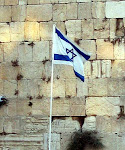By Hillel Fendel
A 2,000-year-old Hebrew document has been recovered by police and antiquities authorities, shedding light on post-Temple Jewish life in the Land of Israel.
The 15x15 cm (6x6 inch) papyrus is 15 lines long, and is clearly dated, “Year 4 to the destruction of Israel.” Archaeologists say this refers to either 74 CE, four years after the Second Temple was destroyed by the Romans, or the year 139 CE, after the destruction of rural settlement in Judah following the Bar Kokhba Revolt.

Amir Ganor, director of the Unit for the Prevention of Antiquities Robbery in the Israel Antiquities Authority, told Israel National News, “We heard about this papyrus several months ago, and after investigation by the police and the other units involved, we finally reached the right people this past week." Asked when it was found and removed from the ground, he said, "It still has pieces of earth on it, and since it was offered for sale in recent months, it is likely that it was found in the very recent past.”
Asked if he knew where it was found, Ganor said, “The best climatic conditions for preserving documents of this nature for so many centuries are in the Judean Desert, and so that is our assumption.” The investigation as to where and how the papyrus was found continues.
The recovery of the document was the culmination of an operation led by the Intelligence Office of the Zion [central Jerusalem] Region and the Undercover Unit of the Jerusalem Border Police, in cooperation with the Unit for the Prevention of Antiquities Robbery and the Archaeological Staff Officer in the Civil Administration.
“It appears that we are dealing with rare historic evidence regarding the Jewish people in their country from more than 2,000 years ago,” Ganor summed up.
The document is written in ancient Hebrew script characteristic of the Second Temple period. This style of the writing is primarily known from the Dead Sea scrolls and various inscriptions that occur on ossuaries and coffins. The papyrus is incomplete and was in all likelihood rolled up; pieces of it crumbled, mainly along its bottom and left sides. The name of a woman, “Miriam barat [Aramaic for ‘daughter of’] Yaakov” is also legible in the document, followed by a name that is likely to be that of the village in which she lived: Misalev, believed to be Salabim and possibly the present-day Kibbutz Shaalvim in the Ayalon Valley.
Also mentioned in the document are the names of other people and families, the names of a number of other villages from the Second Temple period, and legal wording dealing with the property of a widow and her relinquishment of it.
Ganor says that the document is "95%" believed to be authentic and ancient, “based on the epigraphic style, the material the document is written on, the state of preservation and the text, which includes a historic date that can be deciphered.” However, “since this object was not discovered in a proper archaeological excavation, it still must undergo laboratory analyses in order to negate the possibility it is a modern forgery.”
“The document is very important from the standpoint of historical and national research,” Ganor stated. “Until now, almost no historic scrolls or documents from this period have been discovered in proper archaeological excavations… The deciphering of the entire document by expert epigraphers and historians may shed light on how the people of the period managed their affairs and supplement our knowledge about their way of life. What we have here is rare historic evidence about the Jewish people in their country from more than 2,000 years ago, during the days following the destruction which sent the people of Israel into exile for a very long time – until the creation of the State of Israel.”















No comments:
Post a Comment